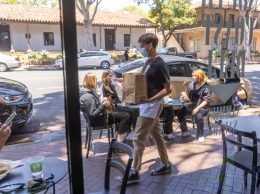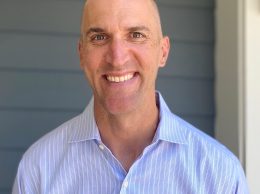By Jamshid Damooei
What makes us human is an important question, and the answer is not always clear. If life is a microcosm of our natural world, what place does our way of life hold and where does economics appear on the scene? I have been wrestling with this question for a big part of my professional life as an economist.
The poor and dispossessed are grossly misunderstood in almost every society. Individuals and families in poverty have to deal not only with the pain of their predicament, but also often with being accused of creating their own downfall. Children in poverty often miss the opportunity of a normal physical and emotional development in their childhood, which often results in being held back in their educational progress and a greater likelihood of suffering from a lack of social mobility in older age. Life expectancy is negatively correlated with level of poverty, and people in poverty are more likely to be victims of crimes.
COVID-19 has painfully destroyed lives and economies in our communities and around the world. The numbers are still emerging, but from what we have learned so far the proportion of lower-income people dying due to the novel coronavirus is two, or sometimes three, times their share of the population in those communities around the nation and across the world.
The reasons are clear: Low-income people live in substandard and crowded dwellings, suffer from lack of access to health care, have to bear the pain of food insecurity, and are threatened by loss of jobs and income during crisis.
In our own backyard, Ventura County schools closed their physical doors and opened virtually with the possibility of learning online. Yet, at the county level, some 15 percent of households do not have either an internet connection or a computer. In some ZIP codes, more than 25 percent of households can’t participate in education offered in a virtual environment.
The children of our underserved families already suffered from many economic and social limitations on their ability to fully enjoy the gift of learning and perform well in school, and now COVID-19 makes the negative impact of disparity even harder to bear.
Is this the first time that we have faced the brutal reality of poverty and inequality in our communities? The answer is clearly no. Every single natural disaster and calamity brought a far greater share of misery to our dispossessed and disenfranchised neighbors. Yet, we never learned our lesson. With a total lack of empathy, we let the appalling economic conditions go on after the physical disaster conditions disappeared. We allowed the scar of it to remain unchecked.
While every economy needs to defend its people against suffering and hardship, not every dollar spent on providing a safety net is a dollar to reduce poverty. The true cost of poverty is the inability of an economy to use its human resources to generate the needed income to enjoy a life of prosperity and affluence. If we see only some as worthy of such privileged position, we stand to suffer the consequences through the creation of poverty.
The conditions in the communities of other nations are not any different. Hundreds of millions of poor and underserved people in developing countries are offered a harsh choice between dying from the novel coronavirus or hunger.
COVID-19 is proving that poverty is a human-made lethal disease that can only be cured by improving our economic system and allowing for greater cooperation to prevail on a global scale.
This can only occur if we work together instead of tearing each other down. The same recipe should be used to heal the wounds of our communities and the nation.
• Jamshid Damooei is the executive director of the Center for Economics of Social Issues and director of the economics program in the California Lutheran University School of Management.






 Print
Print Email
Email

















